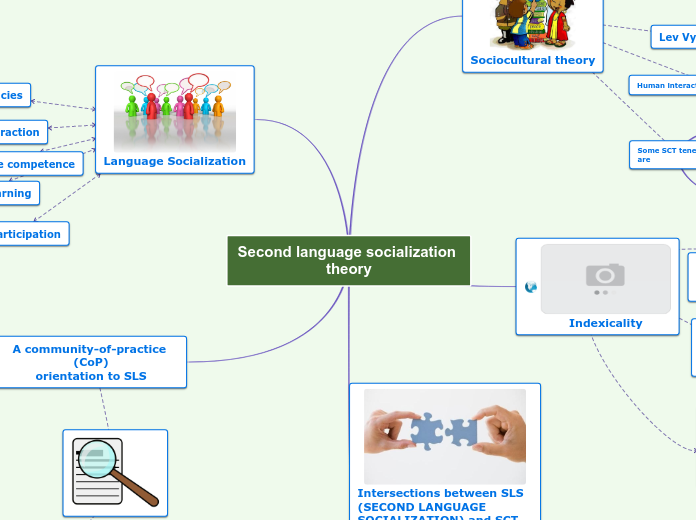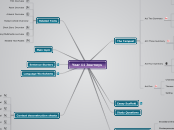For example, the act and scene in this video clip from the movie "Zootopia" are:
Act : Reconciliation
Scene : Judy's Apology
- Characters : Judy Hopps, Nick Wilde
- Setting : Nick's rest place
- Action : Judy apologizes to Nick for her earlier insensitivity, and their friendship deepens as they get closer to solving the case
DRAMA IN PRIMARY ESL CLASSROOM
Relationship between the Elements of Drama and the Benefits in Primary ELS Classroom
Fun Learning
Drama brings a sense of fun and playfulness into the classroom, making teachings more engaging and memorable. Fun activities reduce anxiety and the fear of making mistakes, resulting in a healthy learning environment.
Build Confidence
Drama allows students to take on different roles and characters, which can significantly boost their self-confidence. When students perform in front of their peers, it provides a platform to overcome shyness and fear of public speaking, ultimately enhancing their self-assurance.
Improving Language
and Communication Skills
Drama naturally improves language skills. Participating in dialogues within the context of a dramatic scene helps students improve their spoken English, listening comprehension, and overall language proficiency.
Higher Order Thinking Skills
Understanding and following the plot of a drama requires critical thinking. Students need to analyze the storyline, make connections between events, and anticipate what might happen next. These cognitive processes stimulate higher-order thinking skills like problem-solving, analysis, and synthesis.
Active Learning
Acting out a play into acts and scenes promotes active learning. Students assist in the development, rehearsing, and performance of various aspects of the production. This hands-on approach keeps children physically and mentally engaged, allowing them to get a better knowledge of the content.
Collaboration and Cooperation
Following stage directions requires teamwork. To bring the drama to life, students must collaborate to coordinate their motions, timing, and actions. This collaborative aspect of drama encourages cooperation, teamwork, and good communication skills.
Student Engagement
The setting of a drama creates an immersive environment. It transports students to various scenarios and contexts, making learning more engaging and relatable. Engaging settings capture students’ interest and keep them actively involved in the learning process.
Elements
Stage Directions
Stage Directions with ESL Young Learners // Kids English Theatre (YouTube)
Stage directions are instructions provided in the script that guide actors on how to move, speak, and interact with the set and props. They also describe the characters' expressions and gestures. Stage directions are essential for bringing the written script to life on the stage.
Acts and Scenes
Scenes
Scenes are parts of an act and usually involve a set of characters and focus on a particular event or conversation that advances the plot. They change every time the settings change. These divisions help organize the narrative and provide natural breaks for the audience.
Acts
Acts are the main section of drama, which break the narrative into significant sections, each with its own set of events and developments. Similar to how books are divided into chapters, dramas are separated into acts, which contain many scenes.
Setting
In primary ESL classroom, students can develop stories or scenarios within the chosen settings. For example, in a seaside location, they might make up a story about a buried treasure or a surfing experience.
For example, the settings in this scene from the movie “Moana” are;
Time Setting : Ancient Polynesian Era
Place Setting : Vast Ocean
Setting encompasses the time and place where the drama unfolds. The setting can be a specific location, historical period, or even an imaginary world which helps create the atmosphere and context for the story.
Plot
5 components that made up plot ;
Resolution
All loose ends of the story have
been resolved. The story concludes.
Falling Action
After the conflict has reached its peak, the story begins to wrap up. Any other minor disputes are now resolved.
Climax
The most intense part of the plot. The
conflict is at its most intense moment.
Rising Action
Carries most of the story's details. It builds
intensity as it progresses toward the climax.
Exposition
Introduces the setting, characters,
and the story's primary conflict.
The plot is the series of events that propels the story forward. The storyline is comprised of a series of actions, incidents, and conflicts. Each incident in the plot is linked to the next, producing a cause-and-effect relationship that keeps the audience interested.
Dialogue
For example, Bing Bong’s famous dialogue or last line which was "Take her to the moon for me, okay?" plays a significant part in making the movie "Inside Out" memorable as it encapsulates the film's central message about the bittersweet nature of growing up and letting go of cherished childhood memories.
Dialogue is the spoken communication between characters which plays a crucial role in revealing their personalities, motivations, and relationships. Well-crafted dialogue can be both entertaining, informative or make the scene stands out.
Characters
In primary ESL classroom, role-playing is an excellent way to immerse students in the language. When students take on the role of a character, they enter a different persona and often feel less self-conscious about speaking in the second language.
For example, Jack Frost is the main protagonist in “Rise of the Guardians” who is capable of manipulating ice and snow, which then become a true Guardian, representing "Fun".
Characters are individuals who participate in the story's action. They can be people, animals, or even objects which drive the plot forward through their actions, decisions, and interactions with others.
Definition
Drama in the primary ESL (English as a Second Language) classroom refers to the use of dramatic techniques to teach and reinforce English language skills. It engages students in creative and engaging activities that improve language acquisition and cultural awareness. In a primary ESL context, drama can encompass various activities, such as role-playing and story telling.
Drama (δρᾶμα) comes from a Greek word, "δράω" (drao) meaning "to do" or "to act." It is a form of literature, storytelling, or performance art that is primarily concerned with presenting stories or narratives through the actions, speech, and behavior of characters.









